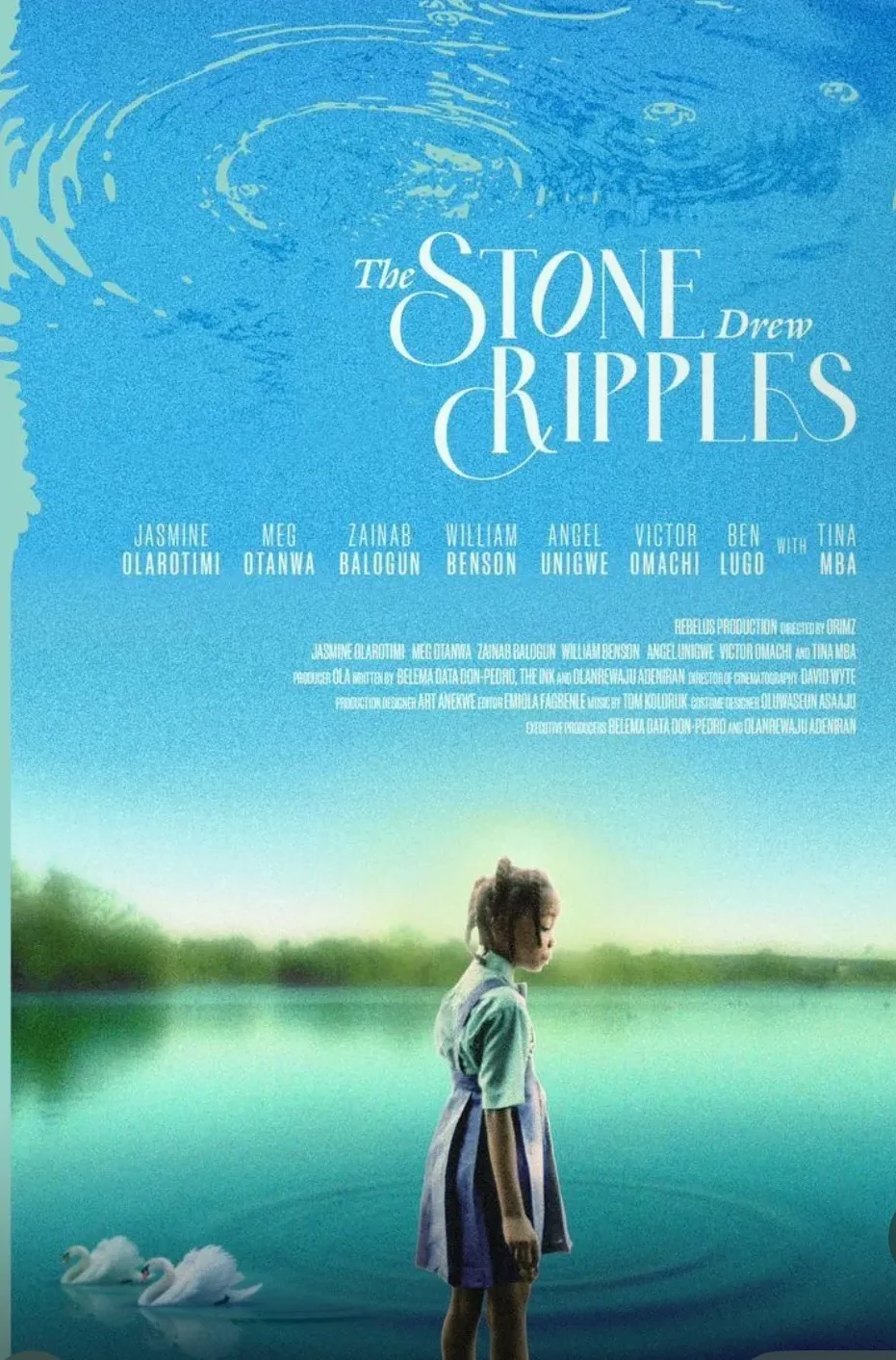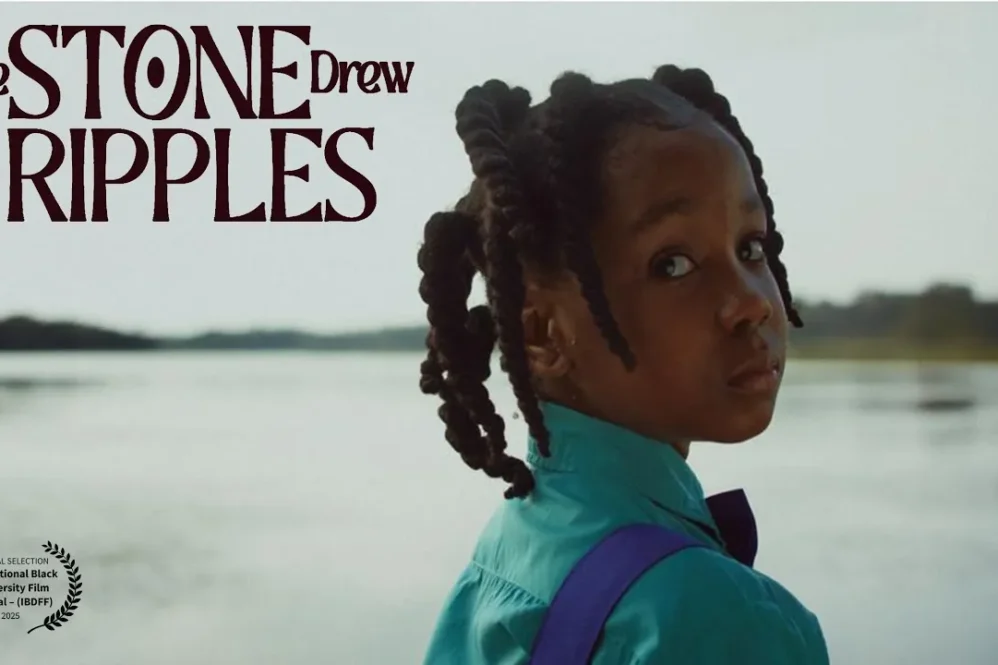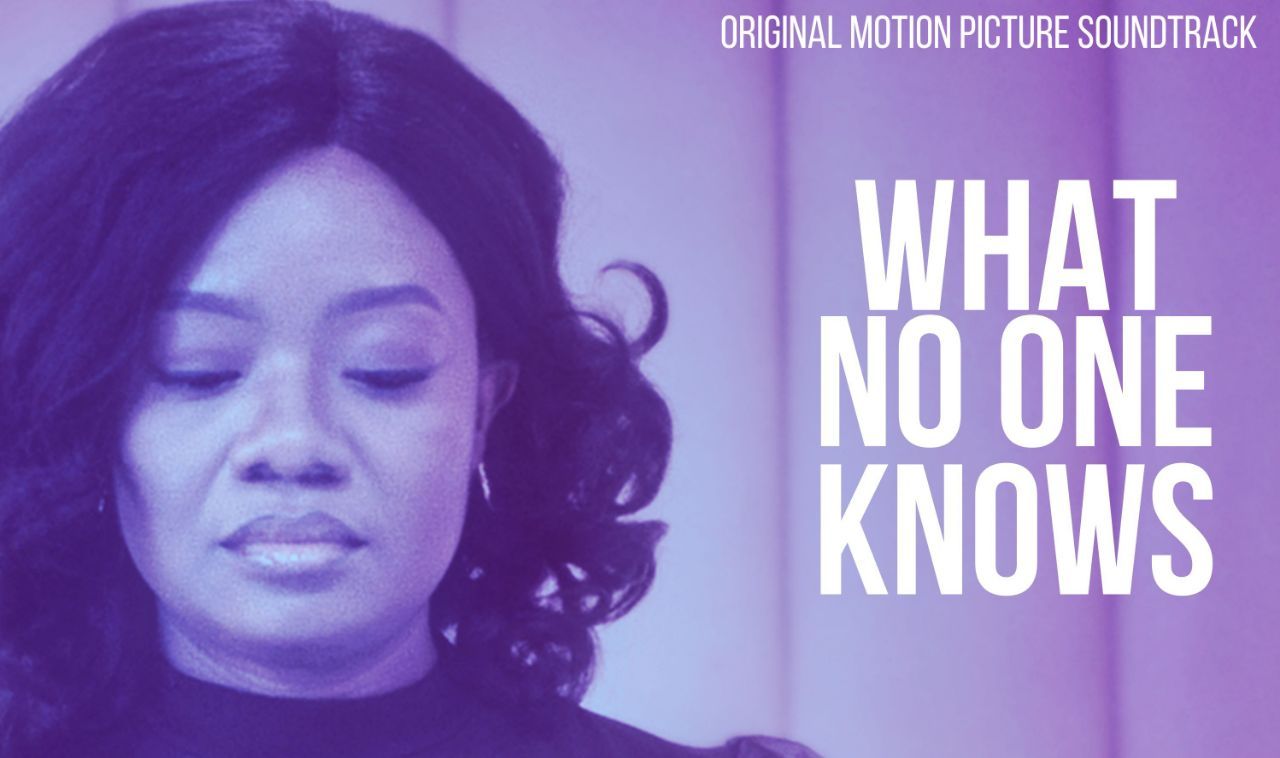Dear reader, help us understand your Nollywood preferences by filling out our audience survey—your input is invaluable and deeply appreciated! Click this link.
One of the last scenes in The Stone Drew Ripples features the main character giving a monologue that tries its best to find the core of the film. The monologue, set against a beautifully shot montage of the family’s happy moments, drifts in and out of themes; its attempt at depth leaves an ending that cuts through whatever emotional height that might have been attained. This defines a lot of the film’s ups—measured camerawork, and downs—an unfocused story.

Directed by Orimz (Choke), The Stone Drew Ripples follows a middle-class Nigerian family of five trying to save their youngest child, who has a chronic illness. It does its best to chronicle the ways our moral system collapses in times of crisis, but its scattered focus and sluggish middle section weaken its impact.
A huge part of that middle section involves a deception that spirals out of control. Scam-based narratives like that thrive on intoxicating visuals and sharp editing. The false high, as the lie gets bigger and bigger, is captured visually and moments of reflection punctuate the rollercoaster ride. All these contribute to an effective emotional comedown that makes rock bottom hit harder. You watch with bated breath as the inevitable consequences of actions finally emerge. Ripples’ choice to often serve as a solemn study takes away the momentum of that middle section.
When Simi’s elder brother, Wale (Victor Omachi), brings his plan to the family, you expect an injection of energy when things begin to fall into place and their success is on the horizon, but it’s quite the opposite. We never see the family truly grapple with many of the choices they make for Simi and the complex emotions of hope and guilt; in the end, you’re left pondering the many things left unexamined.
What the film misses out on in its energy, it makes up for in performances. Olarotimi Jasmine (Oga Bolaji) as Simi is acutely aware of her body, which is impressive for a Nigerian child actor. She knows when to wince and infuses her dialogue with necessary inflections; her face often says a lot with the smallest gestures. William Benson (A Green Fever) is adequate as the patriarch, his voice lending heft to his role while Tina Mba (Breaded Life), playing a character only known as Mummy-in-the-Lord, continues her run of small roles that make a lot of impact. A pastor’s wife who only speaks Christianese, comforting a suffering family with empty platitudes and exploiting their newfound fame for the church’s gain. Her few scenes capture many aspects of the criticism of the church in Nigeria and it helps that she’s also the funniest character—even unintentionally.
Meg Otanwa (For Maria) adds to the canon of Nigerian mothers in film with the little she’s given, wearing worry on her face as her world revolves around her last child. There is an opportunity for more with her character. For example, the theme of unintentional parental abandonment that hovers over the film and is pushed to her, but a lot of it exists only in lines of dialogue and is never really shown.
The things that push the story forward are questionable and disjointed. Wale’s girlfriend is hitting all the Nigerian ‘open eye’ girlfriend stereotypes at the speed of light to position herself as the undeserved fulcrum of the story, where she is forced into an important role without much justification. The paths the story takes are often unclear, and connections falter at the slightest scrutiny. When Simi’s sister, Bimpe, decides to take matters into her own hands and raise money for Simi early in the film, we never get an explanation for how she found the contact sexually exploiting her and the narrative thread is then hastily tied together. The Stone Drew Ripples is aware of where it wants to go and the beats it wants to follow, but it joins each thread with awkward stitching. Its strength often lies in the mundane: the family gathering for meals or Simi and her father playing together in her room.

Luckily, this doesn’t carry over into the visual character of the film. With clinical framing (DOP is David Wyte) and a muted colour palette (Colorist is Josh Borrill) that never feels washed, Ripples tracks each character through small and large spaces and lingers on them in moments of reflection and pain. One of the film’s strongest moments comes when Meg Otanwa leans her head on a window, lost in thought, the cabinets behind her framing her in quiet despair. It’s a subtle but powerful visual cue of her isolation and helplessness.
The film closes on a deeply emotional note, with the montage mentioned earlier, that is effective in the way it is shot, soundtracked and acted. Despite the story’s faults, you feel a heaviness in your heart and are left with questions on how we colour gray areas based on our proximity to them.
The Stone Drew Ripples is available on Prime Video in select regions. Also available on RebelUs Productions YouTube channel.
Become a patron: To support our in-depth and critical coverage—become a Patron today!
Join the conversation: Share your thoughts in the comments section or on our social media accounts.
Track Upcoming Films: Keep track of upcoming films and TV shows on your Google calendar.
Side Musings
- The way that random song came on in the middle of this film threw me off. Don’t worry, I don’t need to explain it. Once you hear it you’ll know.
- I can’t remember the last time I saw lotto numbers on a wall like that. A wave of nostalgia hit me when it showed up.
- Gogoba was low key destined to flop considering how boring her music was.




